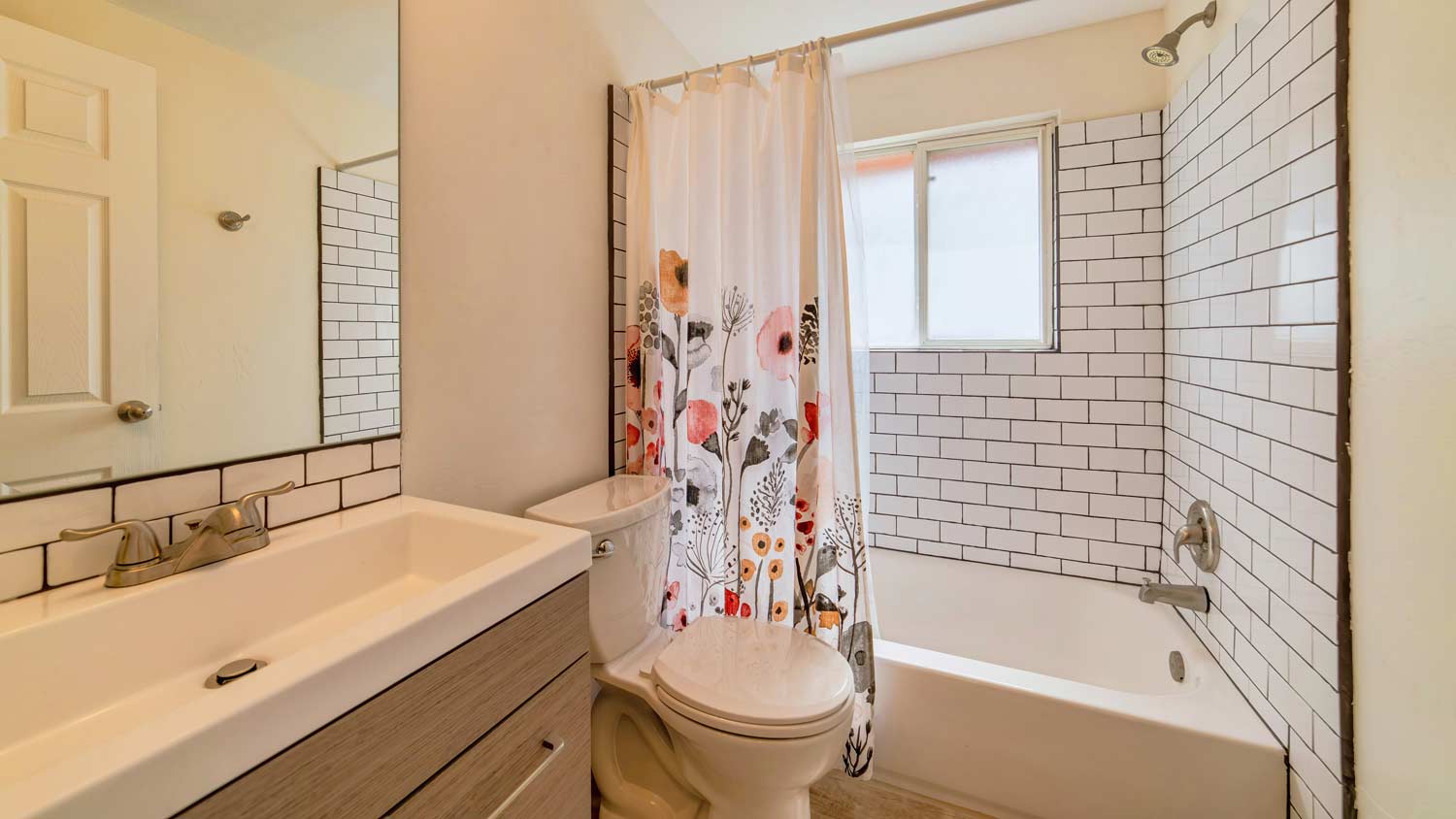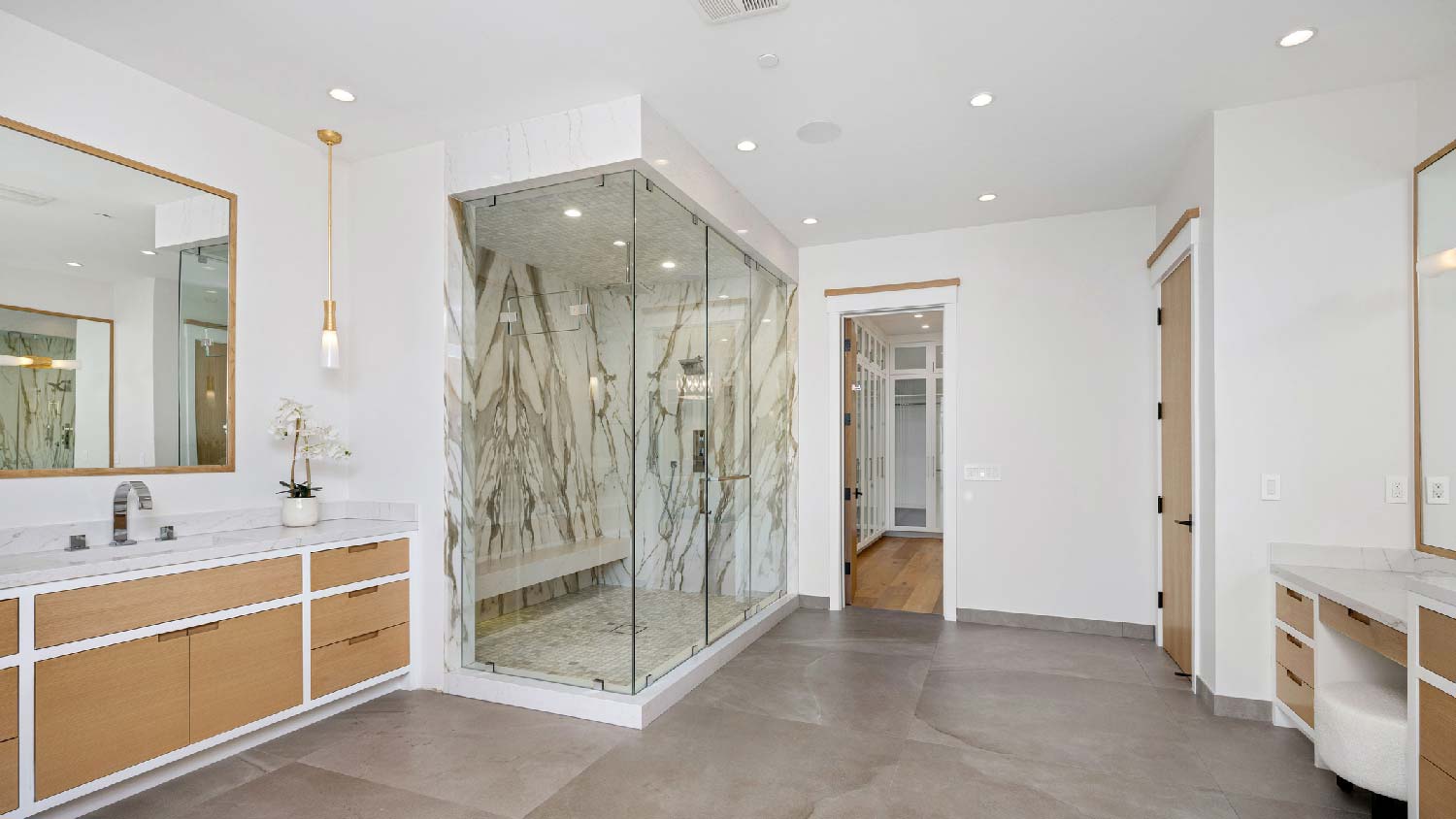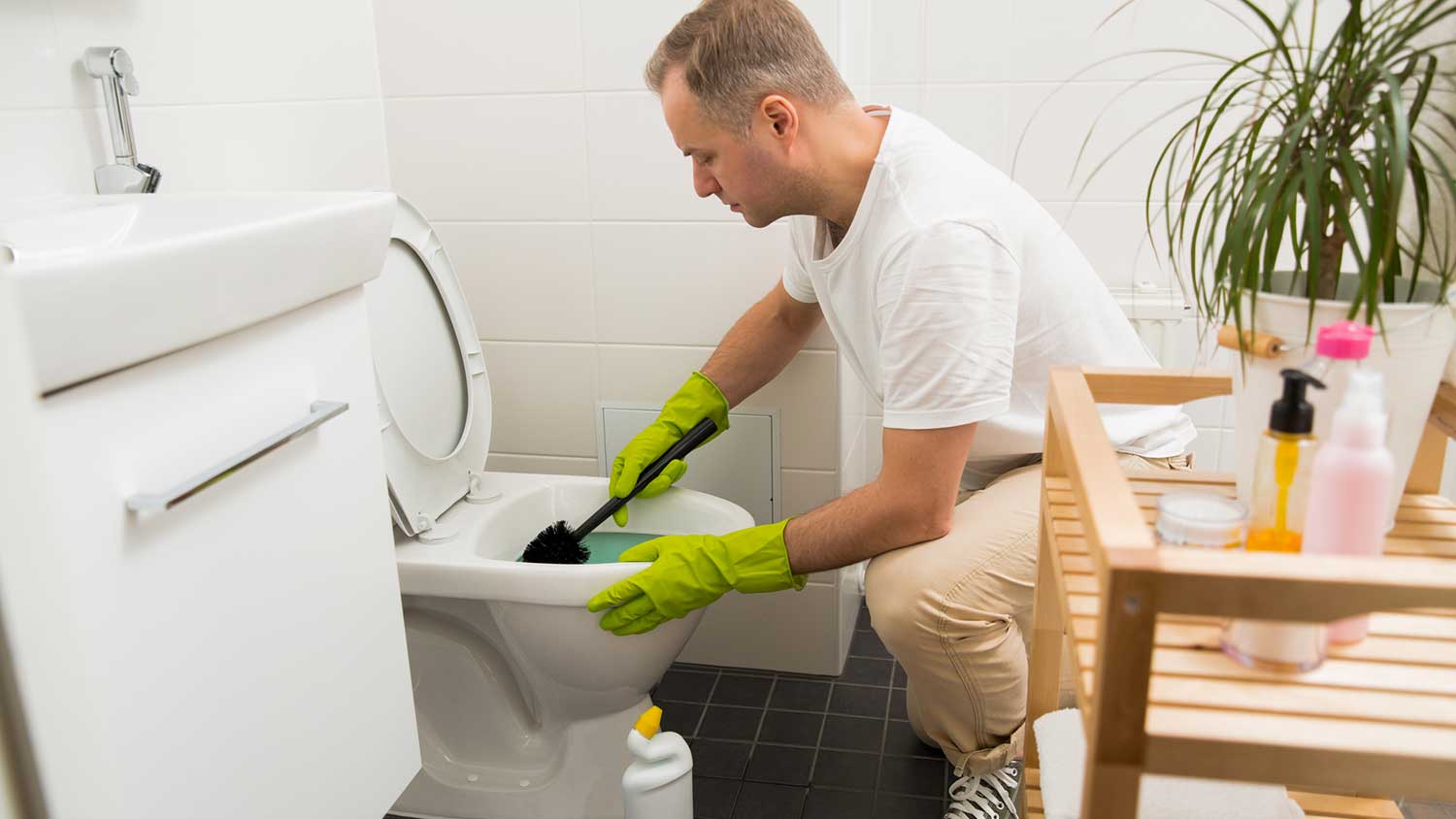Mold vs. Water Damage: Do You Know the Difference?
Take a closer look at that spot on your ceiling


Mold takes just 24–48 hours to grow after water damage.
Early detection and intervention are the only ways to prevent mold growth.
Water damage alone can cause structural damage fast.
Inspect your home every few months for signs of mold and water damage.
You’re conducting some spring cleaning after the rainy season and notice it—a spot on your ceiling. But is it just a water spot, or is it something more ominous like black mold?
Water and mold are like two peas in a pod, but this unpopular pair is notorious for damaging roofs, ceilings, basements, and more. So, let’s explore how you can tell the difference and protect your indoor air quality.
What Are the Differences Between Mold and Water Damage?
Mold and water damage may seem alike, but there are several key differences worth keeping in mind as you try to tell them apart. Check out the most common difference below.
| Type of Difference | Mold | Water Damage |
|---|---|---|
| Appearance | Several different colors | Yellow, orange, or brown |
| Material Impact | Rot and weakness | Warpage and cracks |
| Reparation Cost | $1,100 – $3,300 | $1,300 – $5,900 |
| Smell | Musty odor | No odor |
| Texture | Slimy or fuzzy | Bubbles or peels |
What Is Mold?
Mold is comprised of organisms from the fungi kingdom. There are over 100,000 types of mold species out there, and they all require water to grow. Mold grows on wood, paper, carpet, food, insulation, and more. Since they eat the surface of what they grow on, mold ends up destroying that surface, putting your home at risk of serious damage.
Mold can germinate and start growing in just 24 to 48 hours, depending on if you live in a humid, warm climate. From there, the mold spores colonize after three to 12 days, and you can see them with the naked eye around the three-week mark.
Dangers of Molds
Preventing mold is important because mold can cause many harmful side effects, especially to children, the elderly, and anyone with a pre-existing respiratory ailment. According to the Environmental Protection Agency, some indoor mold species pose health risks, including:
Sneezing
Runny nose
Red eyes
Rashes
Dizziness
Headaches
Asthma attacks
What Is Water Damage?
For small spills or leaks that you thoroughly dried and sealed the source of the problem immediately, a water stain can be exactly that—a water stain. But most water damage occurs without knowing until later when the problem grows until it’s painstakingly obvious, or you walk into that guestroom to prepare it for a visitor.
Since mold grows in just a few days, there’s likely already a mold problem and no longer a mere water spot by the time you discover the leak.
Spotting the Differences Between Mold and Water Damage
Appearance
Initially, you can’t tell the difference between water damage and mold. Most water damage appears in yellow, orange, or brown spots on the ceiling. Though you might expect mold to look dark in color, remember that there are over 100,000 mold species—many of which come in lighter colors like orange or yellow. So don’t use looks alone to distinguish between mold and water damage.
Smell
If you’ve successfully dried a spill or small leak and sealed it up, there should not be an odor. If you detect a foul, musty, or rotten smell, chances are mold is causing the odor.
Texture
Water damage has bubbles or peels in it that make it bumpy and loose, whereas mold growth is slimy or fuzzy, damp, and can smudge if touched.
Impact on Materials
Mold will eventually eat away at the surface of the material it’s on, leading to rot and weaknesses in your home’s structure—but it’s a slow process. Water damage causes wood to warp and can cause splits in your walls and ceilings quickly.
Steps for Preventing Water Stains from Molding
Remember, the key to stopping a water spot from progressing into a mold problem is a fast-acting approach that dries the area and prevents future leaks. A local mold inspection is an easy and thorough way to investigate all areas of the home for peace of mind, but you should also survey your home on your own to tackle water damage.
Here’s how you can spot leaks, dry them, and prevent mold from blooming.
1. Identifying the Source
It’s no secret that water leaks and humidity issues are silent problems that can lead to thousands of dollars in repairs. That’s why you should actively find and resolve water issues as they arise.
Three sources of water damage can cause issues in your home: plumbing, structural, and environmental.
Plumbing leaks: Plumbing problems can cause major water damage if not detected early on. Routinely scan your water bills for unusual increases, and check the leak detector on your water meter for signs of leaks.
Structural leaks: Structural leaks won’t show up in your water bills or your water meter. These are exterior weaknesses that become a problem when it rains. As such, you’ll want to survey your home after rainstorms. Take a walk outside to check for clogged gutters and flooded perimeters, and then look at the ceilings in every room.
Environmental: High humidity is the perfect environment for mold. Though it might not cause obvious rings or circular spots on your ceiling, mold may appear on your HVAC unit, in the bathroom, or in other discreet places. If you live in a humid climate zone and have an indoor humidity level above 60%, consider investing in a quality dehumidifier to remove excess humidity from your home.
2. Drying a Leak

If you detect a new leak in your home, take action first thing so that it doesn’t progress into a mold frenzy. Follow these tips to dry the space:
Close off the area with the leak, if possible
Place a dehumidifier in the room
Crank up the ceiling fans and floor fans
Open the windows slightly
Place a bucket under the leak if it’s severe
Wipe up water on the floor
Remove any furniture that may get splashed
Contact a plumber
3. Preventing Future Water Damage
How you prevent future water damage depends on what caused the damage in the first place. In some instances, it’s a matter of reducing the humidity in your bathroom, but in the case of a significant ceiling leak, you’ll want to fix the leak and have your roof inspected and possibly replaced.
Removing and Repairing Mold vs. Water Damage
Regardless of whether or not it’s mold or water damage, chances are you’ll want to repair the damage and get rid of the unsightly appearance of a stained or mold-ridden interior. Here’s how.
Mold Removal
Water damage that slipped through the cracks undetected usually means mold, and you’ll want to remove it to improve your house's indoor air quality. Most homeowners can remove small amounts of mold on their own with a bleach-based mold cleaner, protective gear, and good ventilation.
Large mold infestations pose serious threats to your health and require professional intervention to safely kill mold and clear the air, so don’t hesitate to contact a mold removal expert near you.
Water Damage Removal
If the water damage is very minor, you’ve taken care of the source of the problem, and you dried and disinfected the area before mold could grow, then chances are you can simply paint over a light water stain.
For porous materials like your drywall, furniture, carpet, and wood that may have significant water damage, this may warrant disposing of the items. If you’re unsure, then it’s best to ask a local drywall repair contractor to fix ceiling problems and inspect the area above the ceiling for sources of the leak if you’re uncertain where it’s coming from.
Cost to Remove Mold vs. Water Damage
It costs anywhere between $1,100 to $3,300 to remove mold, with the average mold remediation cost of $2,200. Water damage restoration costs, on the other hand, fall between $1,300 and $5,900 on average and depend on the extent of the damage and the type of materials that were damaged. You can pay as little as $500 to replace a few floorboards or a section of your ceiling or upwards of $12,500 to replace an entire roof and repair insulation in your attic.
Is Mold or Water Damage Covered by Homeowners Insurance?
Whether or not mold or water damage is covered by homeowners insurance depends on your particular insurance plan and the cause of the damage.
For example, some homeowners insurance plans cover damage caused by a burst pipe but won't cover water damage from a roof leak or water-damaged ceiling plaster. Always read the fine print of your homeowners insurance plan to see whether mold or water damage is covered.
Likewise, if you have a home warranty plan, then you may have coverage for water or mold damage caused by certain appliances, HVAC or sewer systems, or even your roof in some cases. For instance, if water is coming in from a faulty AC vent, your plan may cover vent ceiling leaks.
Home warranty plans often provide coverage where homeowners insurance plans don’t, so it's a good idea to have both and refer to each plan when reviewing your coverage for water damage.
DIY vs. Hiring a Pro for Water Damage Restoration
Depending on the type of water damage that occurred, the water damage restoration process can be as simple as removing all water and letting everything dry to completely replacing any affected materials.
There are three categories of water damage. Generally, Category 1 water damage can be easily treated by yourself because it doesn’t require any disinfection. All you need to do is ensure the water has been cleaned up and any affected material is thoroughly dry. However, if you’re dealing with contaminated water, especially sewage water, hire a water restoration professional. Similarly, any time you notice large areas of water damage on the walls, floors, or ceiling, you should leave restoration to a professional.
Mold remediation should also be done by a licensed and insured pro due to potential health risks. A professional restorer will ensure the mold is completely removed from your house and doesn’t return.















